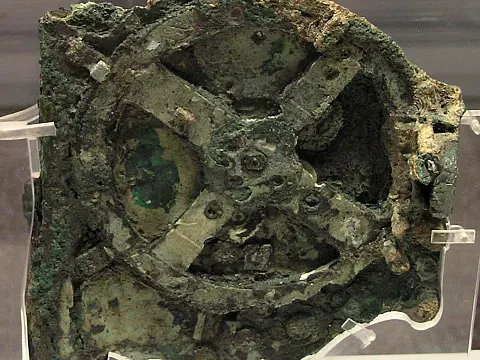Spontaneous Human CombustionSpontaneous human combustion (SHC for short) is a theory that the human body can catch fire, burn or explode without any source of ignition.
Spontaneous Human Combustion may result in simple burns and blisters to the skin, smoking, or complete incineration of the body. Over the past 300 years, there have been more than 200 reports of persons burning to a crisp for no apparent reason.
The first historical account of Spontaneous Human Combustion appears to be from the year 1673 when Frenchman Jonas Dupont published a collection of Spontaneous Human Combustion cases and studies entitled De Incendiis Corporis Humani Spontaneis. Dupont wrote this book after encountering records of the Nicole Millet case, in which a man was acquitted of the murder of his wife when the court was convinced that she had been killed by spontaneous combustion. Millet, a hard-drinking Parisian was found reduced to ashes in his straw bed, leaving just his skull and finger bones. The straw matting was only lightly damaged. Dupont's book on this strange subject brought it out of the realm of folkloric rumour and into the popular public imagination.
Many theories have attempted to explain the phenomenon but must rely on an external point of combustion. One such hypothesis is the wick effect in which the clothing of the victim soaks up melted human fat and acts like the wick of a candle. The actual likelihood that truly spontaneous human combustion can take place is remote, due to the presence of vast quantities of water and the lack of highly flammable compounds and oxygen in the human body.
Investigations into Spontaneous Human Combustion
A modern example is an unnamed woman discussed in a 1965 paper entitled "A Case of Spontaneous Combustion" by Professor David Gee, Head of the Department of Forensic Medicine at the University of Leeds.
Professor Gee states:
"Belief in the occurrence of spontaneous combustion is of respectable antiquity. More recently opinion has swung away from the quasi-supernatural views of earlier years, to regard such cases as due to unusual degrees of flammability of the human body in certain circumstances, distinguishing the condition with the name preternatural combustion."
Professor Gee's article concerns an 85-year-old woman who fell dead in her home from a heart attack. Her head landed in the hearth of her open coal fire and her body was "grossly incinerated, apart from the right foot which lay beyond the damaged floorboards. Both arms and the left leg had been almost completely destroyed."
That the victim was dead before the combustion began was learned from an examination of the remaining parts of her body, which also shows how incompletely the victim's body had been destroyed:
"The coronary and internal carotid arteries showed atheromatous disease. No soot particles were present in the trachea. Blood from the right foot contained no carboxyhaemoglobin."
Following an SHC event, the body is normally more severely burned than one that has been burned in a normal fire. The extremities are usually untouched by the fire while the torso suffers severe burning. Only objects immediately associated with the body have burned; the fire never spread away from the body. SHC victims have burnt up in bed without the sheets catching fire, the clothing worn is often barely singed, and flammable materials only inches away remain untouched. A greasy soot deposit covers the ceiling and walls, usually stopping three to four feet above the source of combustion and objects overhead show signs of heat damage, such as melted candles and cracked mirrors. Temperatures of around 1,600 degrees Celsius (3,000 degrees Fahrenheit) are normally required to char a body so thoroughly.
Scientific Experimentation in Spontaneous Human Combustion
In August 1998, using a dead pig wrapped in a blanket and placed in a mocked-up room, the BBC set out to prove the wick effect theory in its science television show QED. The episode was entitled "The Burning Question".
A small amount of petrol was poured on the blanket as an accelerant. After igniting the petrol, the researchers left it to burn by itself. The temperature of the fire was regularly recorded at only around 800 ° C (1,472 ° F).
As the fire burned through the pig's skin, the fire melted the pig's subcutaneous fats, which flowed onto the blanket. Bone marrow, which also contains a high amount of fats, contributed to the burning.
The surrounding furniture was not burned, although a television placed above a cupboard had its plastic cover melted. The fire had to be manually extinguished after seven hours. Most of the pig's body had been burned to ashes.
From the experiment, the BBC researchers claimed to have explained the following characteristics of SHC:
- The fires were highly localized. The flames of the fire were less than 50 centimetres (20 inches) high; therefore, the fire usually did not spread to furniture in the vicinity.
- The body was severely burned.
- The fire, although not very hot comparatively, can burn for a long period of time, as shown by the experiment. It is further fuelled by the body fat of the victim, which explains why the body can burn for such a long time.
- The furniture located above the cupboards burned. The fire continuously heated the air and produced a convection current. Hot air rose and caused the plastics in the television set to melt.
There are many problems with the QED program, which were raised by John E Heymer (who was unhappy with his own appearance on the show):
The wick effect, while a real phenomenon, is a slow "smouldering" process with gentle lapping flames and is thus very at odds with the reported rapidity and ferocity of SHC.
The use of accelerants was not appropriate, since they are not a known factor in apparent SHC.
The programme made use of time-lapse photography in demonstrating the wick effect, without labelling it as such. This undoubtedly led many viewers to erroneous conclusions about the rapidity of the wick effect, which (as discussed above) is a slow process.
One section of the programme attempted to demonstrate the wick effect on a wooden-framed stuffed armchair, presumably because of difficulties in procuring a human body and various ethical matters arising thereof. The armchair resolutely refused to behave in the manner predicted. When the armchair remained 80 per cent unburned, this was announced as a partial demonstration of an effect that could happen under other conditions (if the chair were a corpse).
Fire Research Station Officer Stan Ames was shown inspecting the damaged chair and declaring: "This is broadly what we expected to find. It can all be explained in terms of ordinary physics and chemistry."
"It was, however, marred by the conclusions drawn, which were not justified by the content of the programme. This is: it cannot be said at present, that 'science' has explained beyond reasonable doubt what is happening in these unusual cases."










